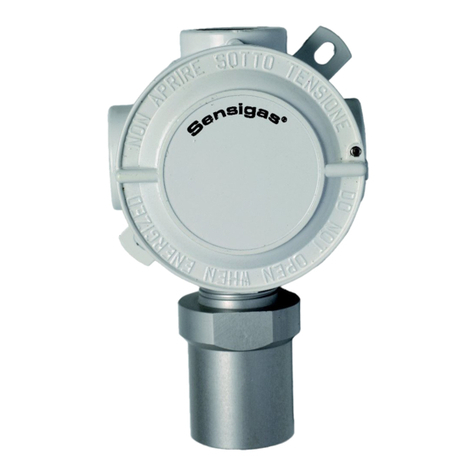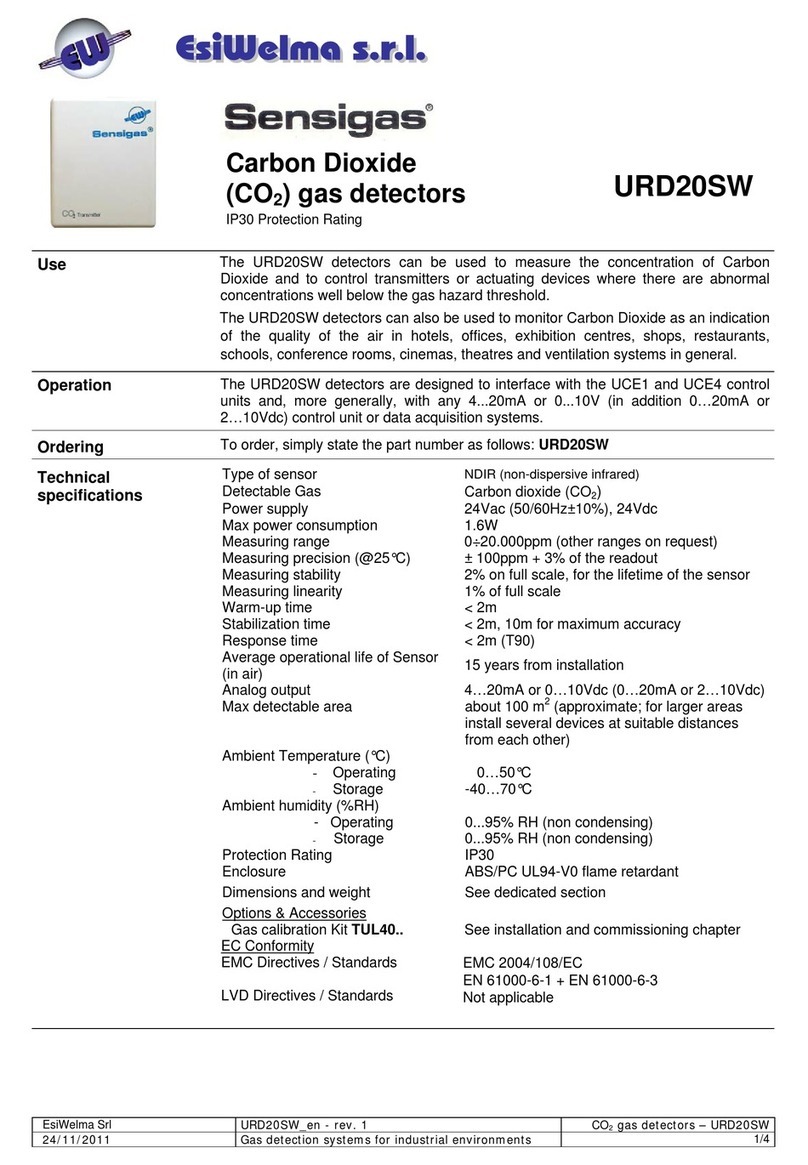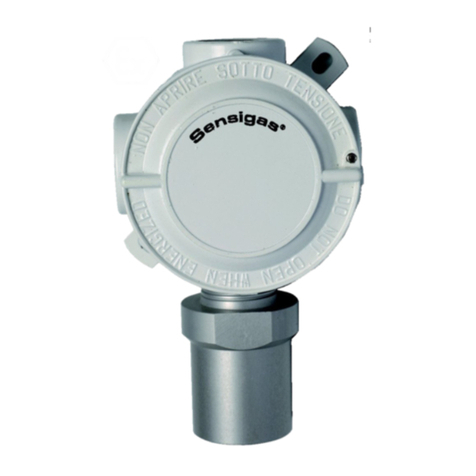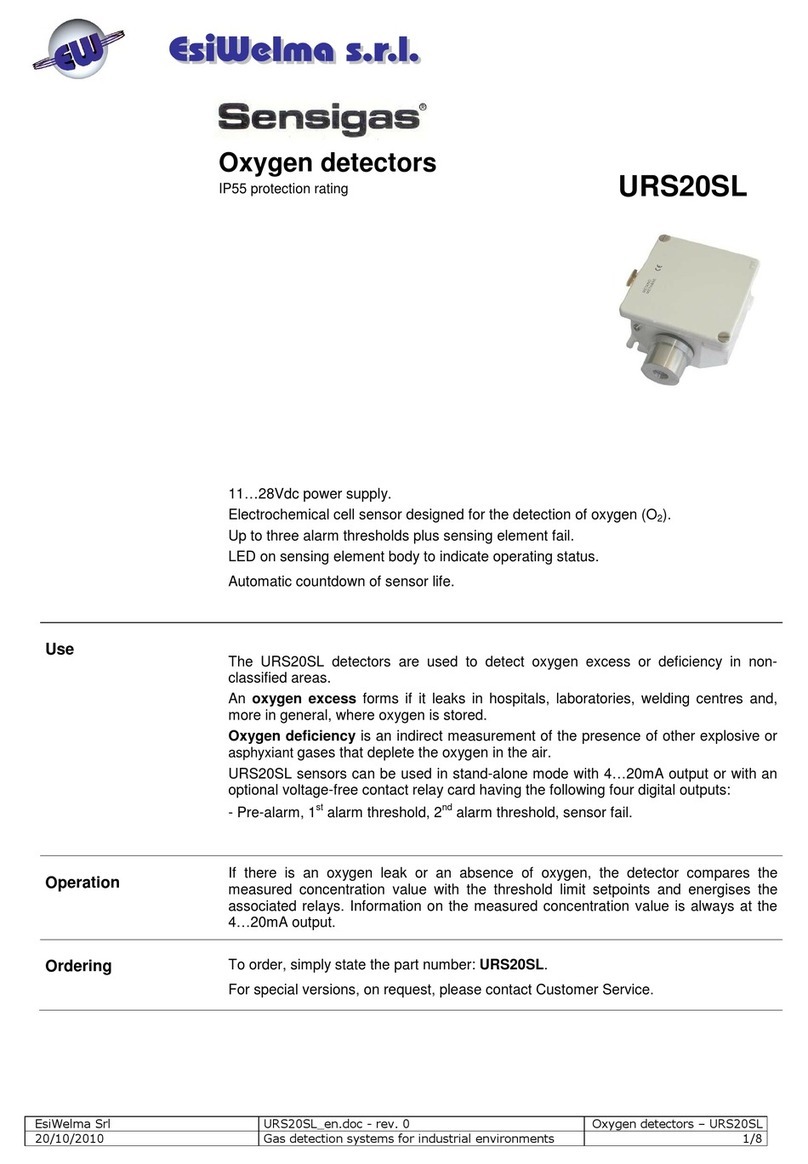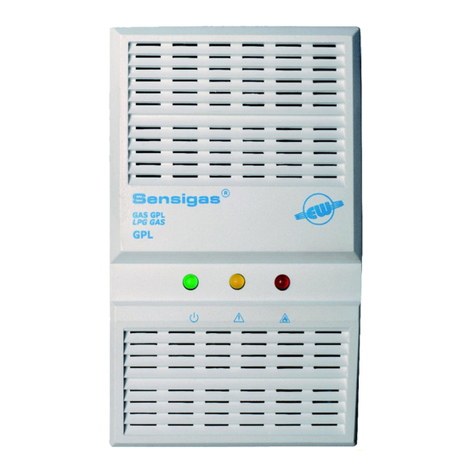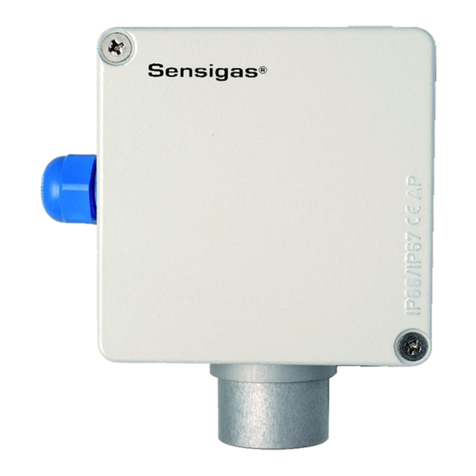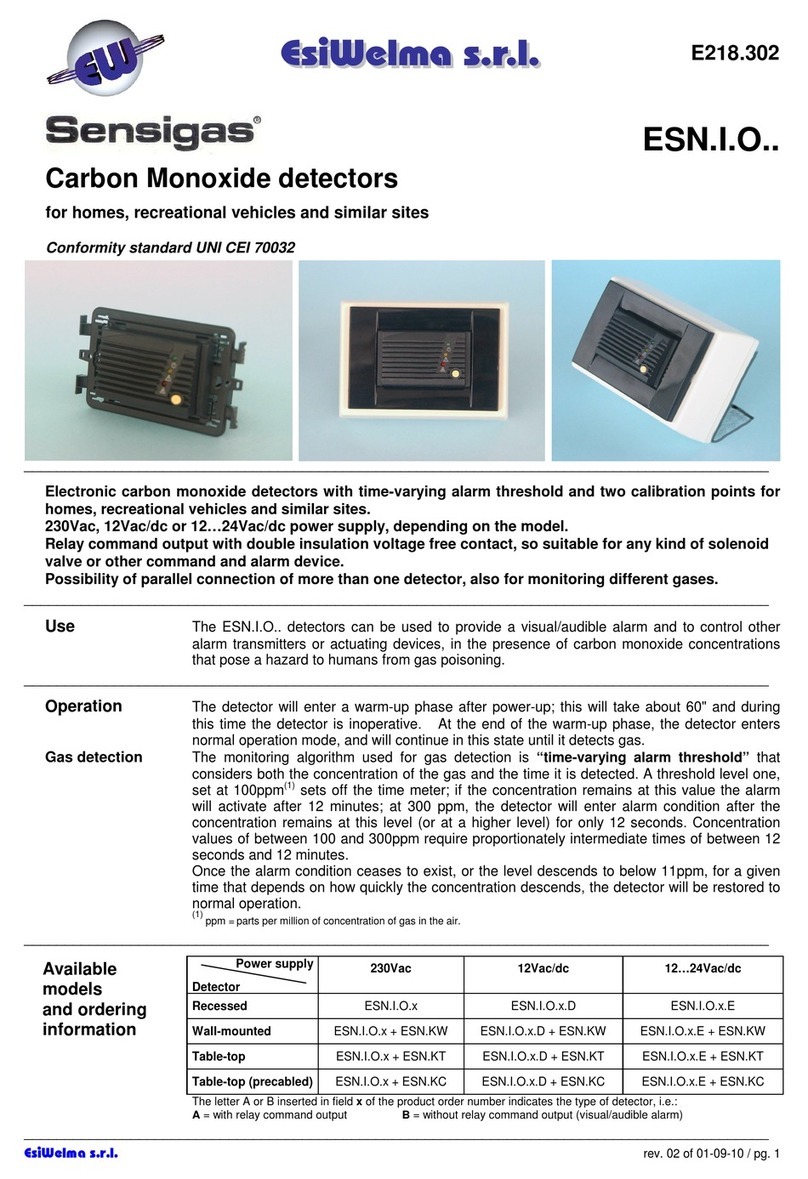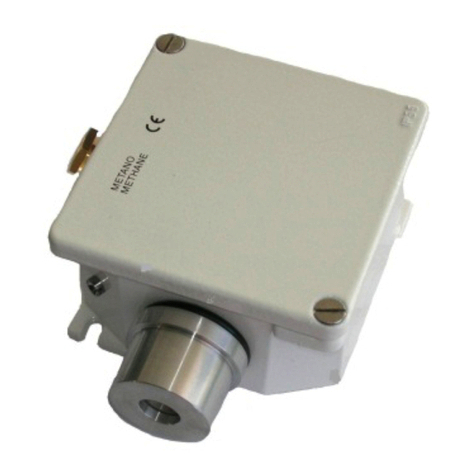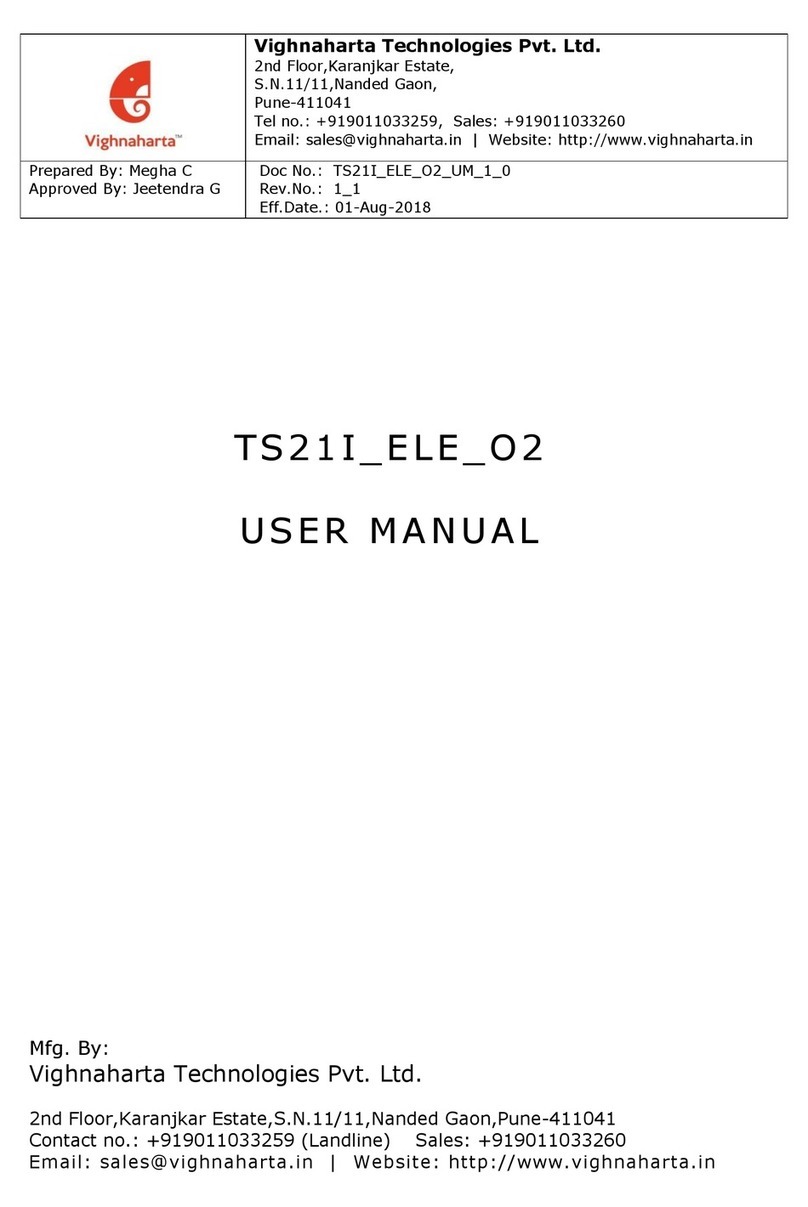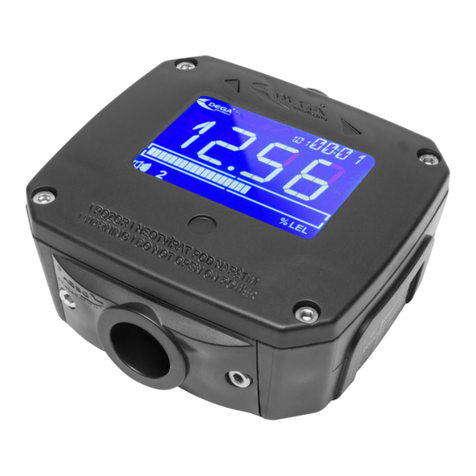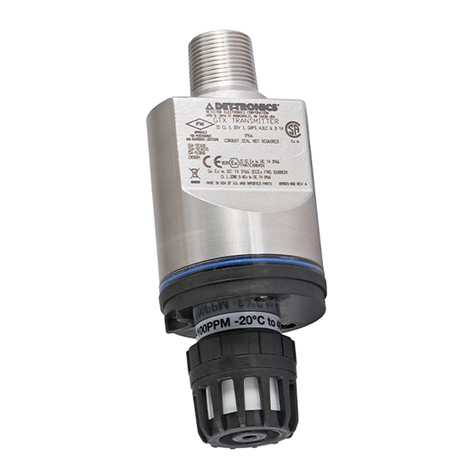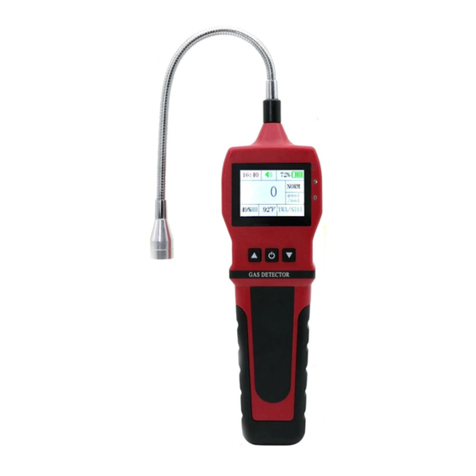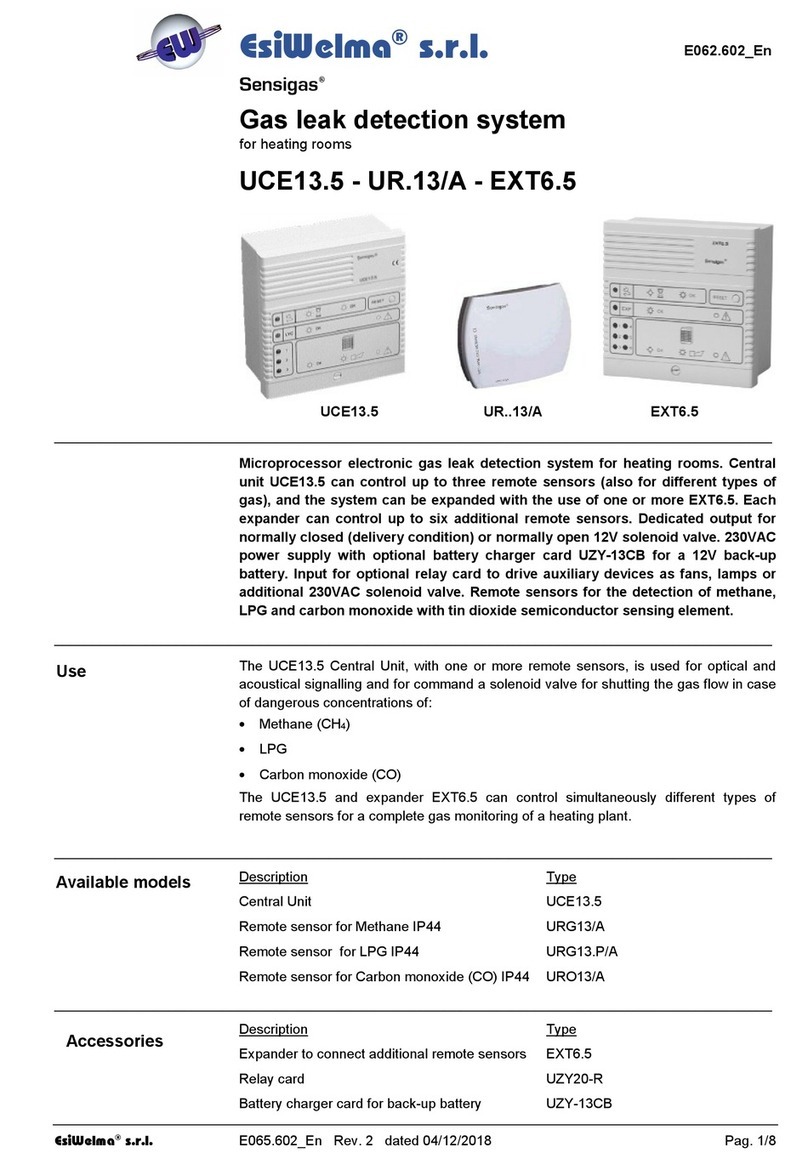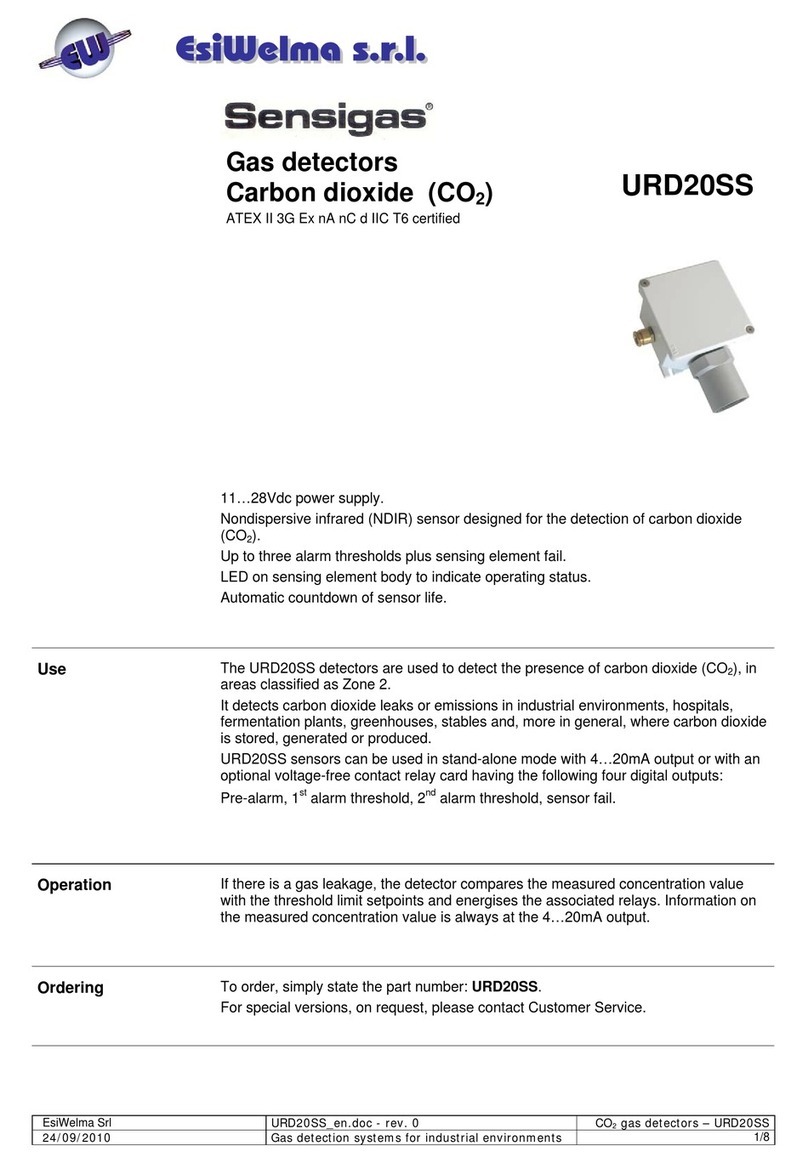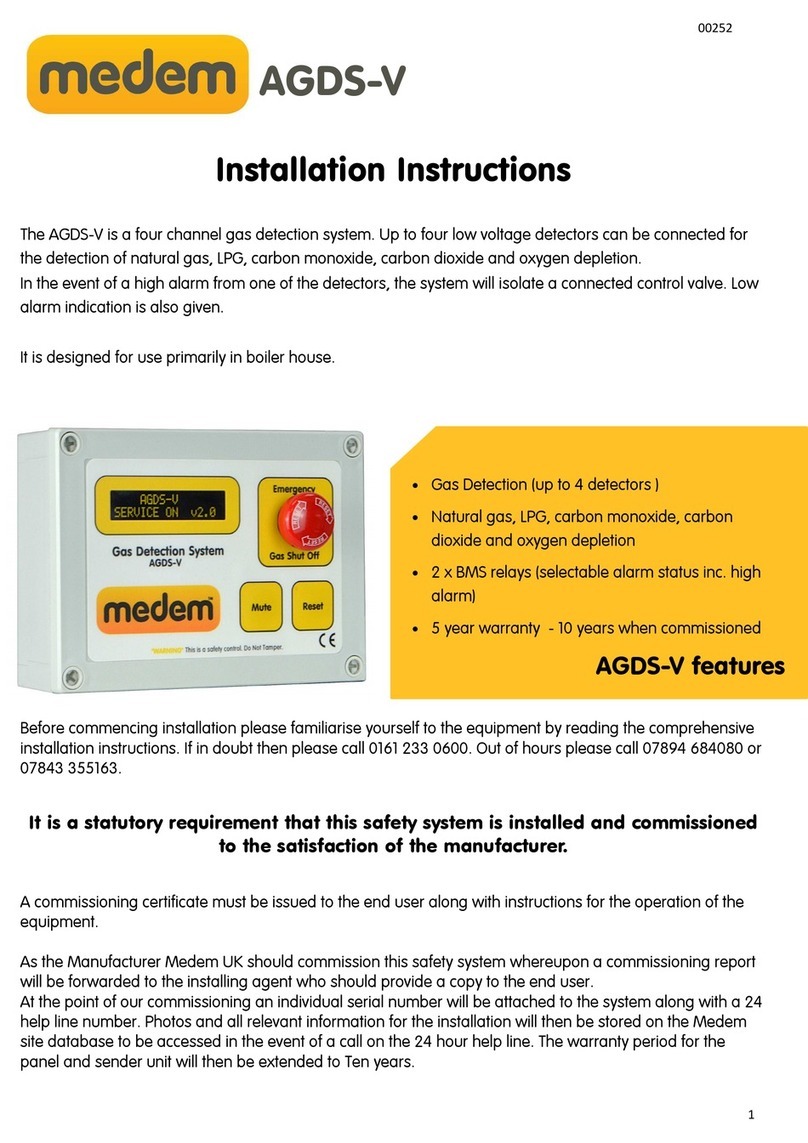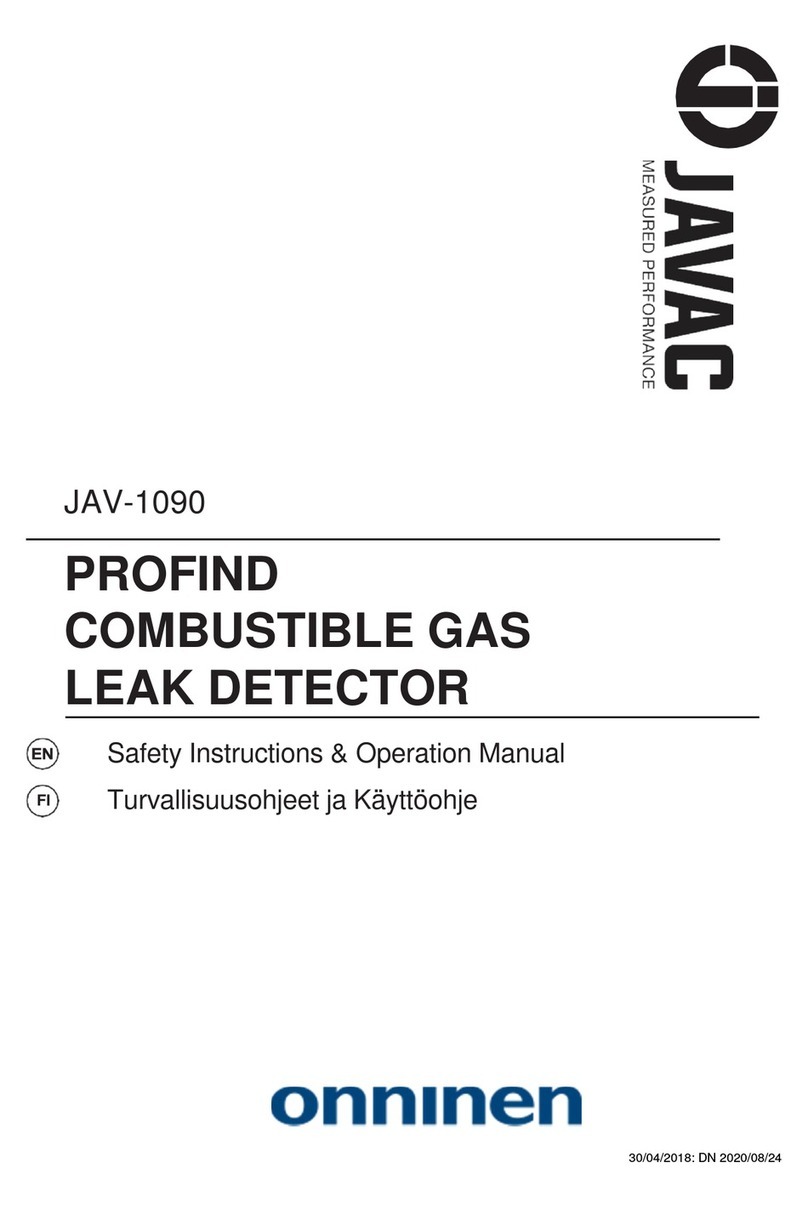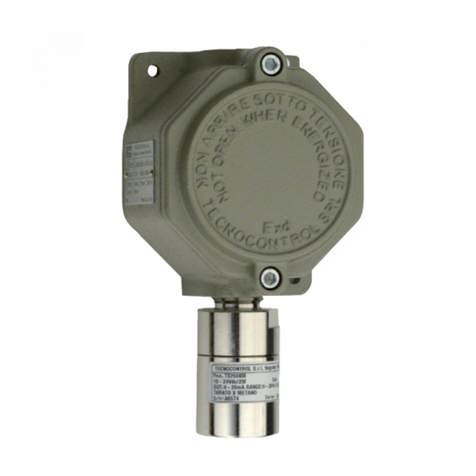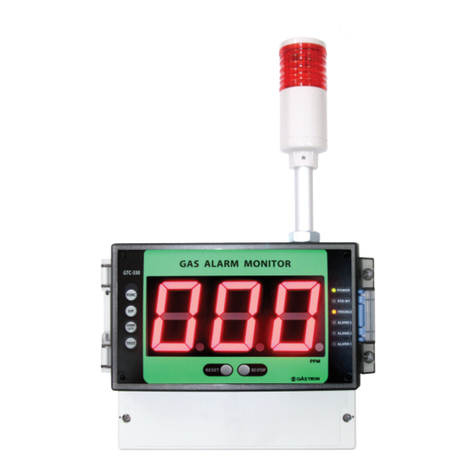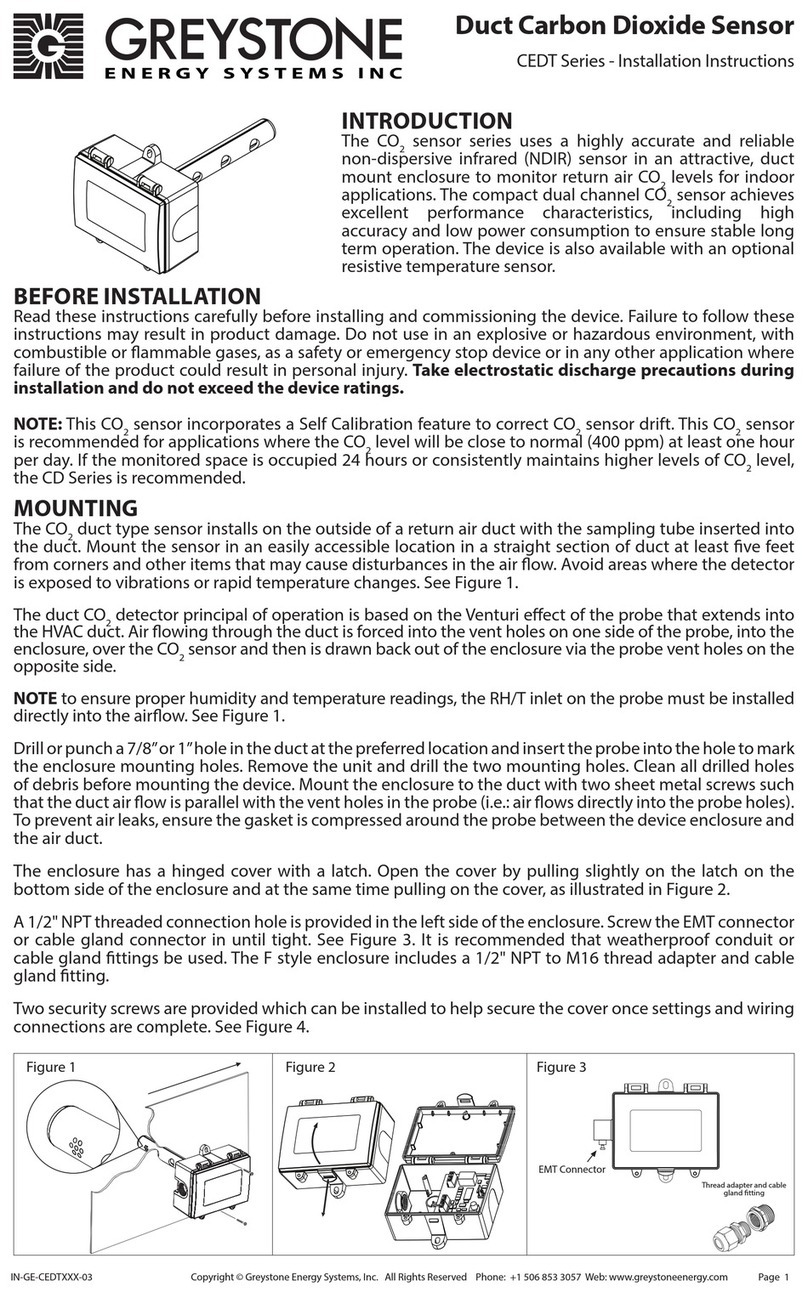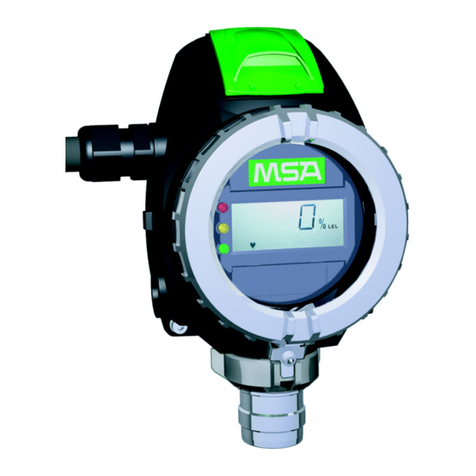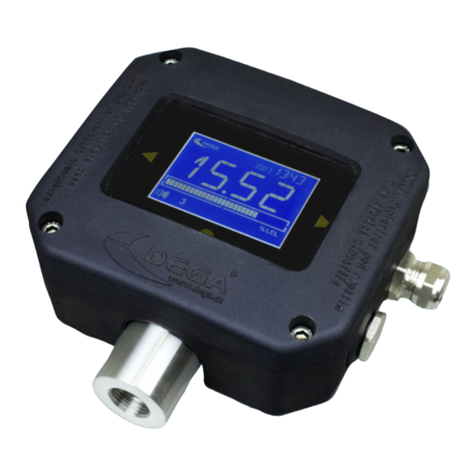
EsiWelma s.r.l.
rev. 02 of 01-09-10 / pg. 3
___________________________________________________________________________________________
Commissioning
Power up the detector and check that all the warm-up and normal operation phases are executed.
Carry out an operational response test by pressing the button on the front (or use a dedicated LPG calibration
canister with dosing valve and release a small amount of gas near the front grille) to check the correct
engagement of the solenoid valve and other command and/or alarm device connected to the relay; it is
advisable to repeat the operational test at least once a year, or after a prolonged period of stoppage.
If other test methods are used instead of the one described the detector may generate different, unexpected
responses. In particular, the use of inappropriate substances or vapours (alcohol or silicon-based solvents etc.)
or in any case, high concentrations of test gases could cause permanent damage to the sensing element and
may cause the detector to operate incorrectly.
The detector needs no periodic maintenance, with the exception of the periodic operational test and its re-
placement 5 years after the installation date.
Do not tamper with or open the device: danger of electric shock and/or malfunction.
Use a wet cloth and mild detergent to periodically clean the device.
Do not use aggressive detergents like alcohol, ammonia, solvents etc.
Before cleaning the detector, switch off the system power supply to avoid the risk of electric shock.
Warning
The detector and its sensing element have been designed for ongoing use in areas where there is permanent
occupation by people, so normally pollution-free.
The presence of gases or vapours from some substances such as alcohol, silicons or solvents found in some
detergents or polishes, or from the fumes generated by cooking may cause inappropriate action of the detector
and in the long term could affect the reliability of the device.
The particular Methane and LPG odorization made by the distributor, together with the high sensitivity of the
human olfactory apparatus, make it possible to smell the presence of these gases already at extremely low
concentrations, so a lot earlier than the detector. For operational and regulatory reasons, the detector is
calibrated to take action at a higher threshold which is still very far below the hazard threshold.
___________________________________________________________________________________________
If an alarm goes off, stay calm, put out flames, switch off the gas or LPG cylinder at the meter, do not switch on
or off lights or any electrical appliances or equipment, open doors and windows to increase the flow of fresh air.
If the alarm stops, it is necessary to find out what set it off and take consequent action.
If the alarm continues and the reason for the presence of gas cannot be determined or eliminated, leave the
building and contact emergency services.
___________________________________________________________________________________________
(1) LEL = Lower Explosive Limit
___________________________________________________________________________________________
In the event
of alarm
Technical
specifications
Power supply (see available models) 230Vac
±
10% or 12Vac/dc
±
10% or 12…24Vac/dc
Frequency 50/60Hz
Consumption 2 VA
Command outputs SPDT relay - capacity of the contact 250Vac 5(3)A
Alarm threshold 9% of L.E.L
(1)
of the Methane or LPG, depending on the
model
Operational lifetime of a detector 5 years from installation
Max detectable area approx. 40 m
2
Visual warnings Green LED (power is on)
Yellow LED (warm-up / sensor fail)
Red LED (gas alarm)
Audible alarms:
Piezoelectric buzzer 85dB at 1m
Protection Rating IP42 when correctly installed
Product conformity standard
EMC Electromagnetic Compatibility
Low voltage (LVD)
CEI216-8
EMC 2004/108/EC – EN50270
LV 2006/95/EC – EN60669-1
Operational room temperature -10...+40 °C
Ambient humidity allowed: 30...90% RH (non condensing)
Dimensions For installation in 503 type recessed mounting box
• 142 x 100 x 72mm with ESN.KW wall-mounting adapter
• 142 x 120 x 100mm with ESN.KT/KC table-top adapter
Enclosure ABS/PC UL94-V0 flame retardant




